Hummus
This post may contain affiliate links. Read my full disclosure policy.
Say goodbye to mediocre store-bought hummus—this authentic recipe delivers a creamy, flavor-packed dip, perfect for pita or as a standout on any Middle Eastern table.
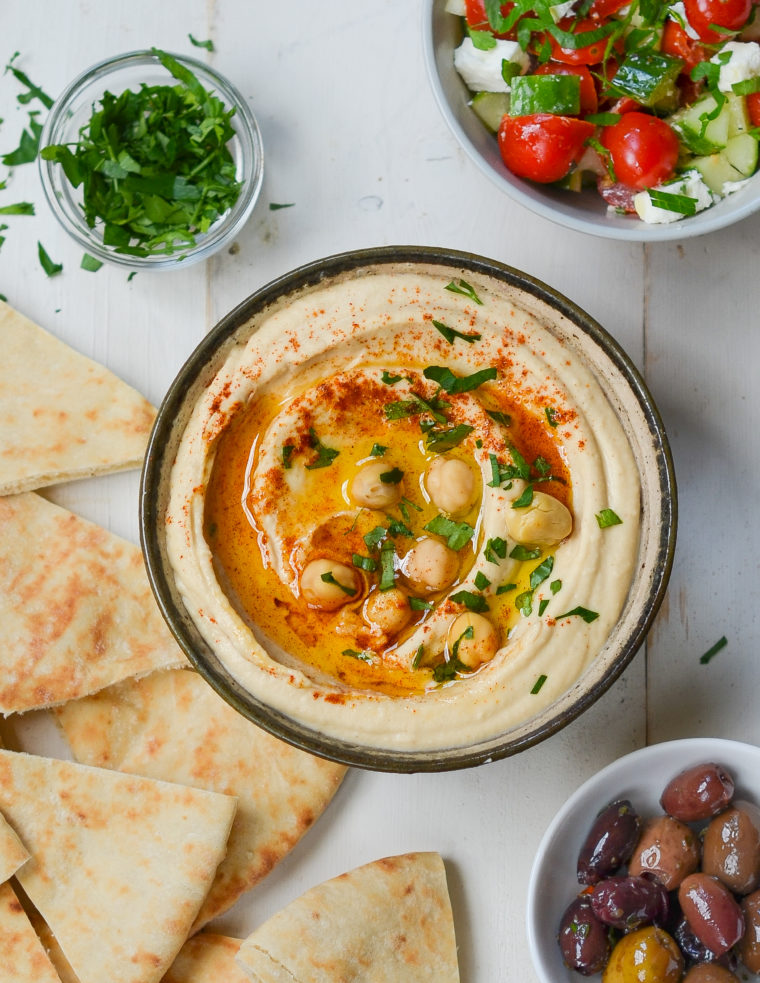
Hummus is a Middle Eastern spread made from a blend of chickpeas, tahini, lemon juice, olive oil, garlic, and spices. It’s commonly served as a starter or mezze, paired with pita bread, or as a side to dishes like falafel, kofta, Israeli salad, shakshuka, or chicken kabobs. I was fortunate enough to learn this authentic hummus recipe from a kabob maker in the Old City of Jerusalem. Using a few smart shortcuts I’ll share with you, it’s surprisingly easy to replicate at home.
So, why go to the effort of making homemade hummus when you can just grab a tub at the store? For starters, homemade hummus skips the soybean oil often found in store-bought varieties, staying true to traditional olive oil, and it swaps the artificial tang of citric acid with fresh lemon juice. Plus, no preservatives! Packed with protein and healthy fats, this homemade hummus recipe isn’t just healthier—it also delivers a flavor that’s miles ahead of anything you’ll find on the shelf.
Table of Contents
“This hummus recipe is FANTASTIC — the best I have ever had — and also ridiculously easy to make. No more store-bought hummus for me!”
What You’ll Need To Make Hummus
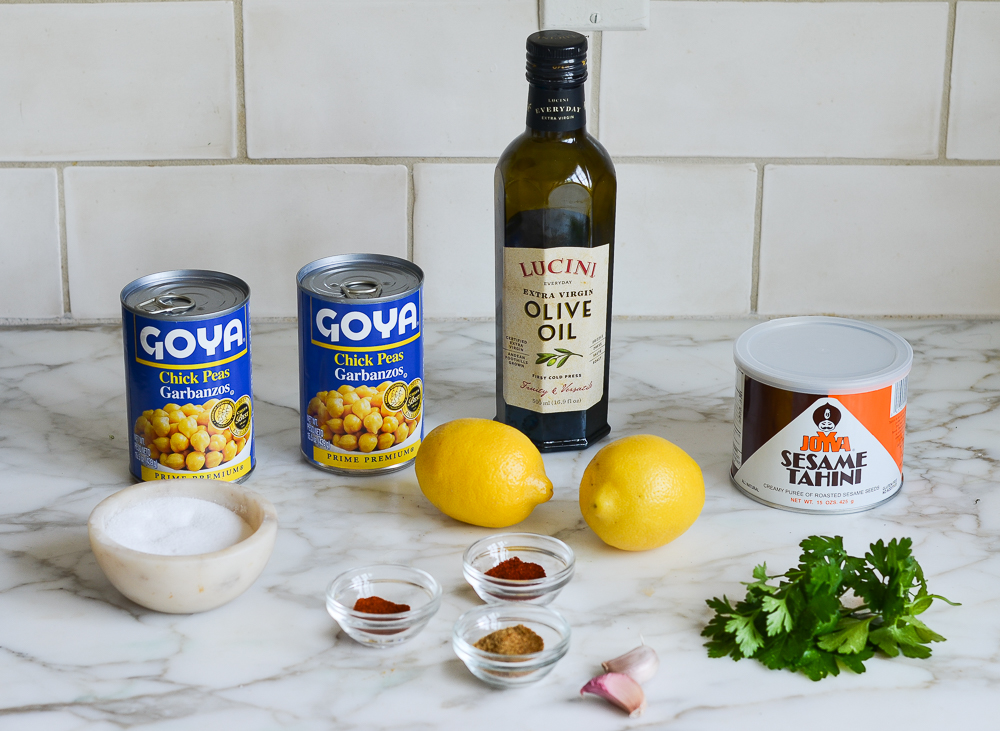
- Canned Chickpeas (also called Garbanzo beans): The base of the hummus, providing a smooth texture and a nutty flavor. While many hummus aficionados insist on using dried chickpeas that have been soaked for authenticity, I assure you, it’s not necessary. I’ve made hummus both ways and find there’s virtually no difference in the final product’s taste or texture. The convenience of canned chickpeas makes the process simpler and just as delicious.
- Lemon juice: Adds brightness and acidity.
- Sesame Tahini: Made from ground sesame seeds, tahini contributes a rich, nutty flavor and creamy texture. It is also used in other Middle East dishes, such as baba ghanoush, tahini sauce, and halva. You can find it in most supermarkets near the other nut butters.
- Garlic: Adds a pungent kick and depth of flavor.
- Ground Cumin and Cayenne Pepper: These spices provide earthiness and a slight heat, respectively.
- Extra-Virgin Olive Oil: Olive oil adds richness, smoothness, and a fruity aroma to the hummus. It also helps in blending the ingredients into a cohesive mixture. A drizzle of olive oil on top before serving also adds an extra layer of flavor and makes a gorgeous presentation.
- Paprika: Adds a pop of color and a subtle, smoky flavor. If you’re looking to switch things up, try sumac or za’atar instead. Sumac is a tangy, lemony spice made from dried and ground berries, which lends a bright, citrusy note. Za’atar is a Middle Eastern spice blend that typically includes thyme, sesame seeds, sumac, and salt.
- Jump to the printable recipe for precise measurements
Step-by-Step Instructions
Begin by draining the chickpeas in a colander (no need to rinse them). You’ll need to save the canning liquid for the recipe and set aside a few whole chickpeas for serving.
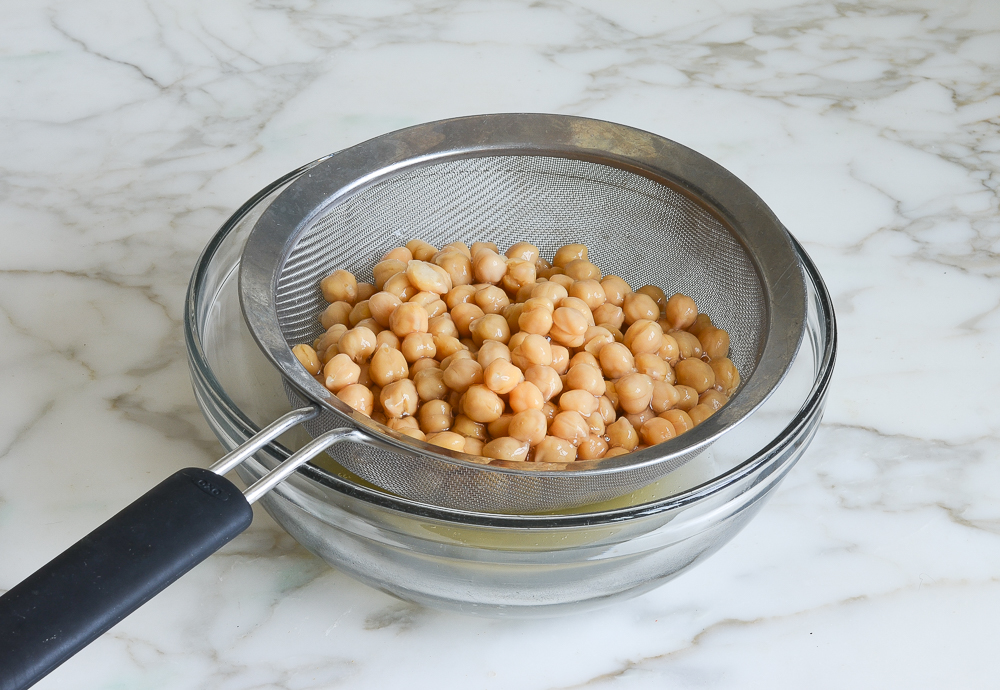
Next, combine the drained chickpeas, tahini, lemon juice, olive oil, garlic, salt, spices and 1/3 cup of the canning liquid in the bowl of a food processor. While a high-powered blender can also be used, you might need to stop and scrape down the sides more frequently, and it could take a bit longer to achieve the same smooth and creamy texture.
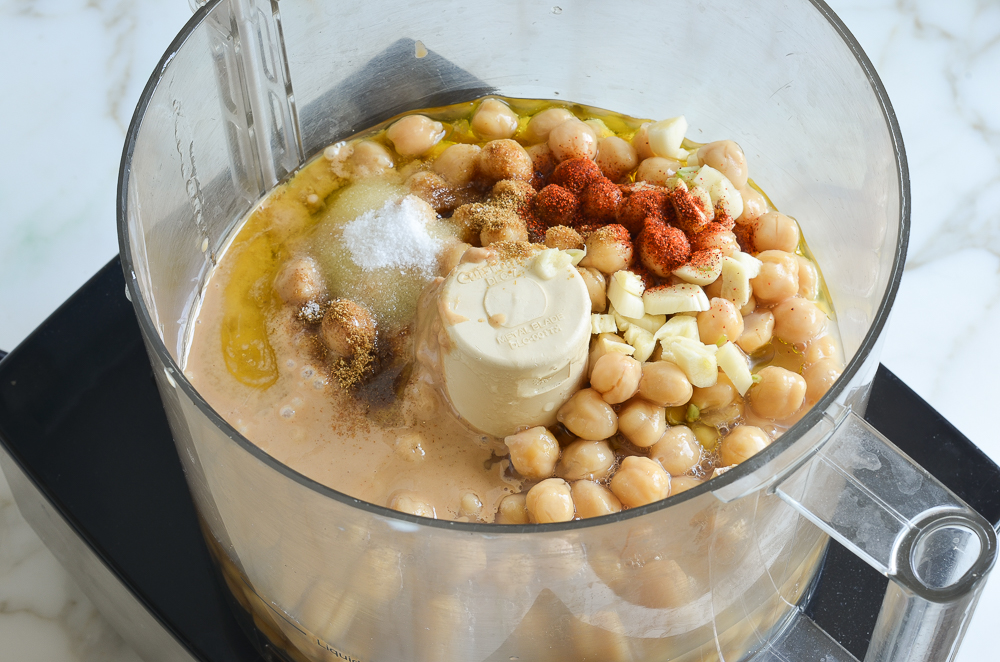
Blitz for a few minutes until smooth and creamy, adding more of the reserved liquid to thin the hummus if desired. The hummus should just hold its shape when you drag a spoon through it.
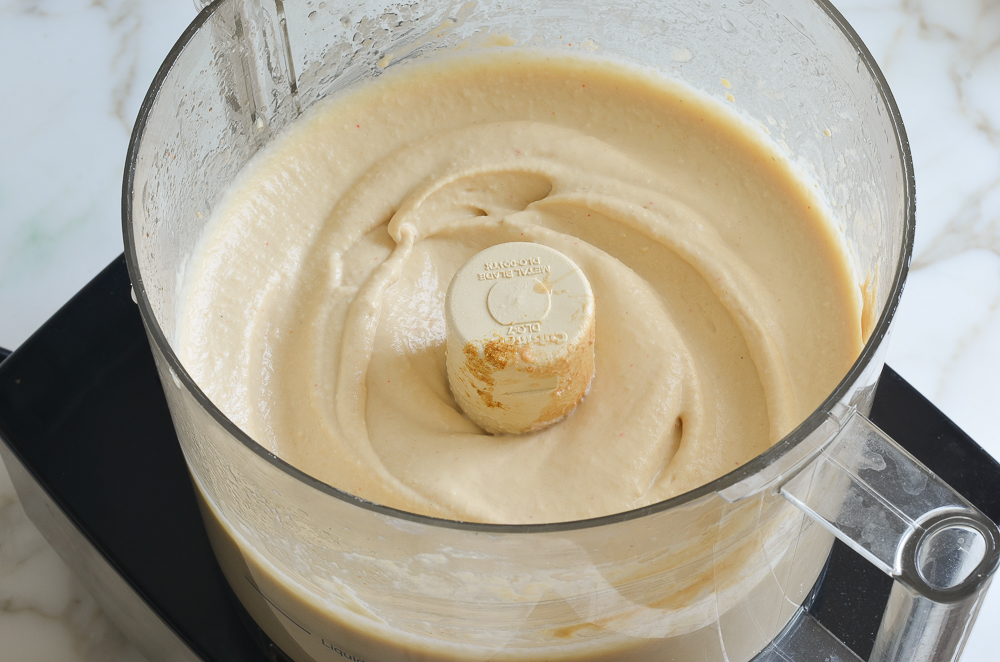
Transfer the dip to a bowl and use a spoon to form a shallow well in the center. Drizzle a bit of olive oil in the well, sprinkle with paprika and fresh parsley, and top with the reserved whole chickpeas. Serve with pita wedges, pita chips or crudités.
Make-Ahead Instructions
This hummus recipe can be made up to 2 days ahead of time and stored in a covered container in the refrigerator. Bring to room temperature before serving.
Frequently Asked Questions
I have seen recipes that call for peeling the chickpeas, supposedly because the skins prevent the hummus from getting super creamy. I tried it—it took forever, and I could not tell the difference. Keep it simple!
When you open a can of tahini, you will notice that the solids settle in the bottom the can, similar to natural peanut butter. It is very difficult to stir tahini in the can (the solids on the bottom are quite stiff) so I suggest scraping the entire contents of the can into a bowl, then using a whisk or hand-held electric mixer to blend. Place whatever tahini you don’t use back in the can and refrigerate until needed.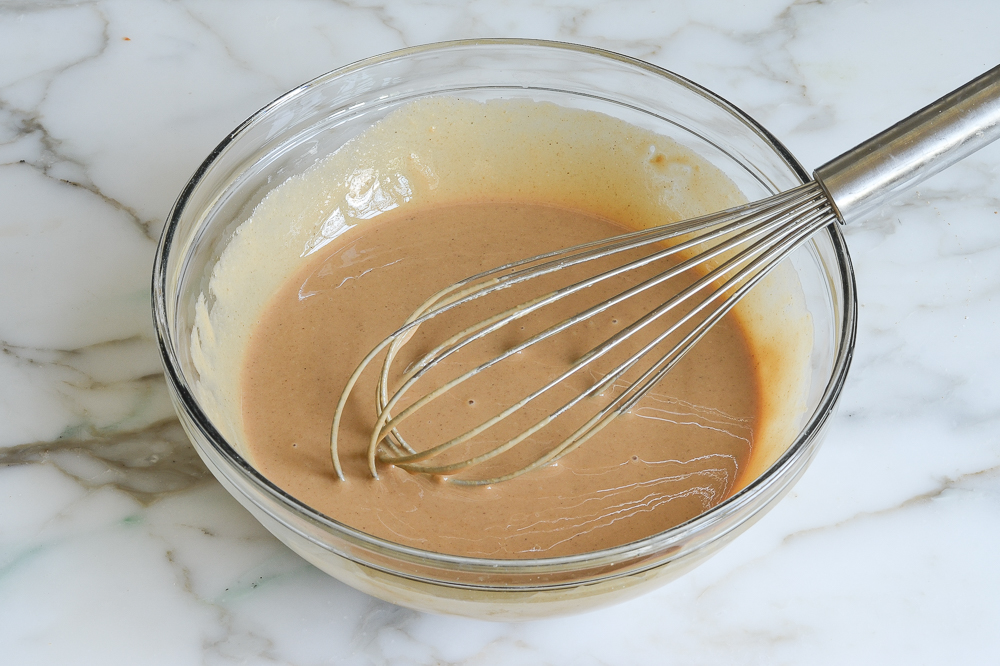
Video Tutorial
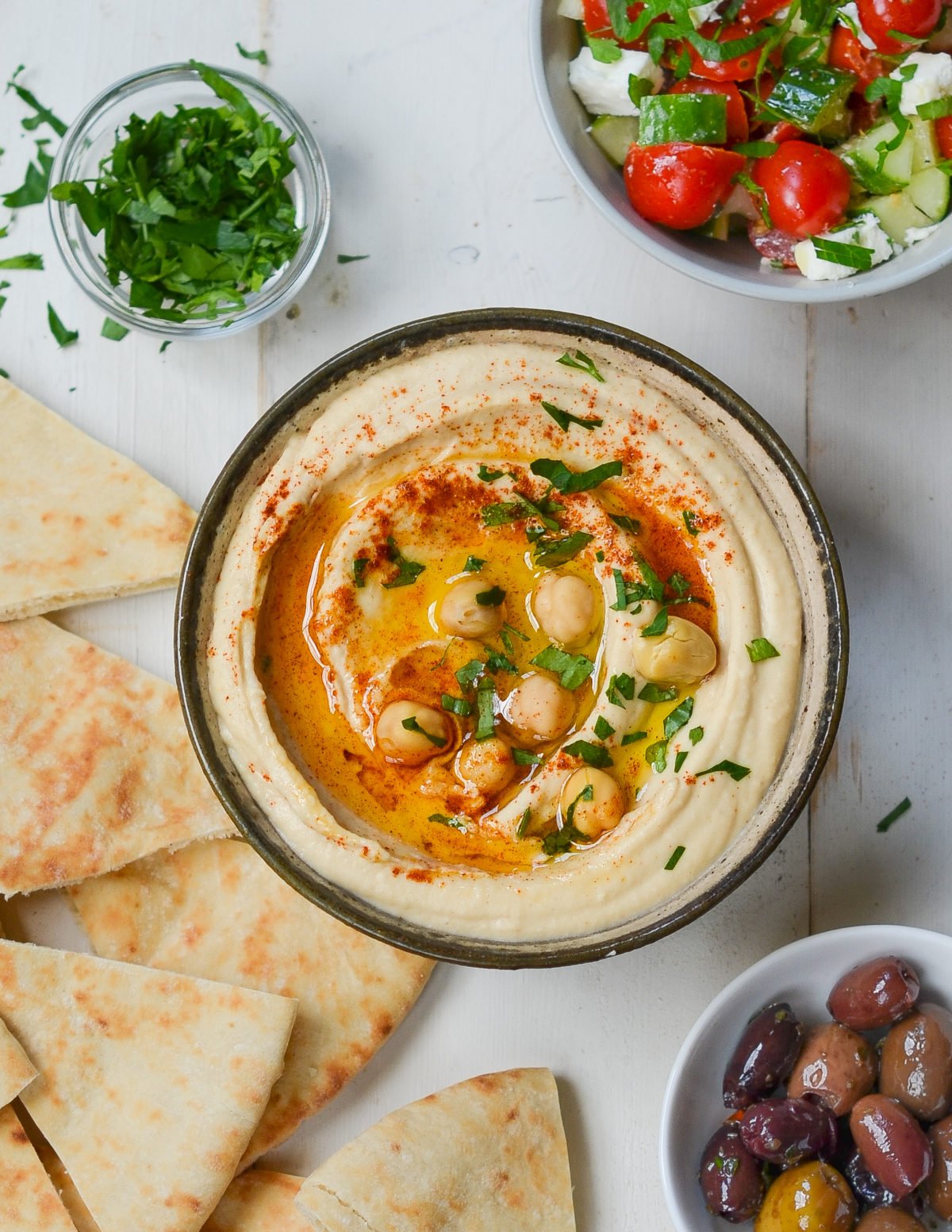
You May Also Like
Hummus
Say goodbye to mediocre store-bought hummus—this authentic recipe delivers a creamy, flavor-packed dip, perfect for pita or as a standout on any Middle Eastern table.
Ingredients
- 2 (15½ oz.) cans chickpeas
- ¼ cup freshly squeezed lemon juice, from 2 lemons
- ¼ cup sesame tahini, well stirred (preferably Joyva Sesame Tahini)
- 2 cloves garlic, roughly chopped
- Heaping ¼ teaspoon cumin
- ⅛ teaspoon cayenne pepper
- 1 teaspoon salt
- 3 tablespoons extra virgin olive oil, plus more for drizzling
- 1 tablespoon freshly chopped parsley, for serving (optional)
- Paprika, for serving (optional)
Instructions
- Reserving the liquid from the cans, drain the chickpeas in a colander (no need to rinse them). Set a few chickpeas aside for garnishing the hummus.
- In the bowl of a food processor fitted with metal blade, combine the chickpeas, lemon juice, tahini, garlic, cumin, cayenne pepper, salt, olive oil, and ⅓ cup of the reserved canning liquid. Process for several minutes until smooth and creamy. The hummus should hold its shape when you drag a spoon through it; add more liquid and process again if it seems too thick. Taste and add adjust seasoning, if necessary.
- Transfer the hummus to a serving bowl. Use the back of a spoon to swirl a shallow well in the center. Drizzle a little olive oil in the well; sprinkle with parsley and paprika, then garnish with the reserved chickpeas. Serve at room temperature with pita bread, pita chips or crudités.
- Make-Ahead Instructions: Hummus can be made and stored in a covered container in the refrigerator up to two days ahead of time. Bring to room temperature before serving.
Nutrition Information
Powered by ![]()
- Serving size: 1/4 cup
- Calories: 98
- Fat: 4 g
- Saturated fat: 1 g
- Carbohydrates: 12 g
- Sugar: 0
- Fiber: 4 g
- Protein: 5 g
- Sodium: 225 mg
- Cholesterol: 0
This website is written and produced for informational purposes only. I am not a certified nutritionist and the nutritional data on this site has not been evaluated or approved by a nutritionist or the Food and Drug Administration. Nutritional information is offered as a courtesy and should not be construed as a guarantee. The data is calculated through an online nutritional calculator, Edamam.com. Although I do my best to provide accurate nutritional information, these figures should be considered estimates only. Varying factors such as product types or brands purchased, natural fluctuations in fresh produce, and the way ingredients are processed change the effective nutritional information in any given recipe. Furthermore, different online calculators provide different results depending on their own nutrition fact sources and algorithms. To obtain the most accurate nutritional information in a given recipe, you should calculate the nutritional information with the actual ingredients used in your recipe, using your preferred nutrition calculator.
Gluten-Free Adaptable Note
To the best of my knowledge, all of the ingredients used in this recipe are gluten-free or widely available in gluten-free versions. There is hidden gluten in many foods; if you're following a gluten-free diet or cooking for someone with gluten allergies, always read the labels of your ingredients to verify that they are gluten-free.

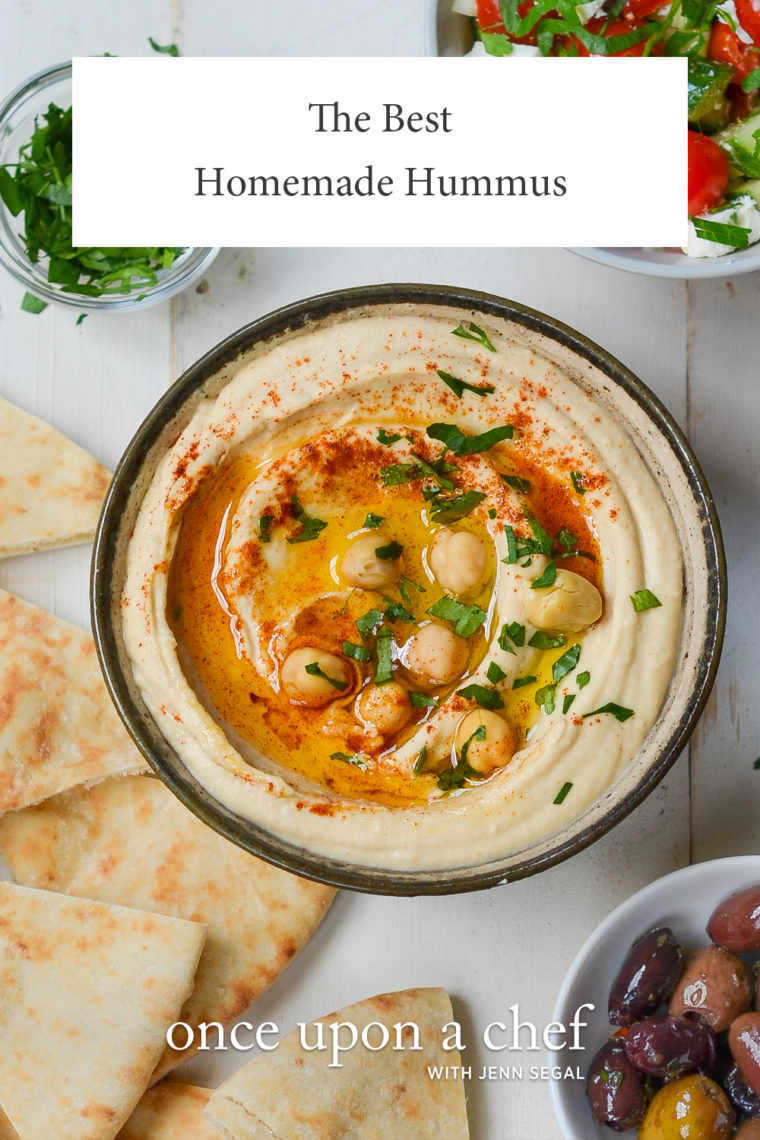
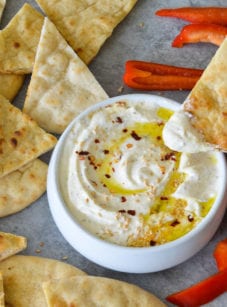
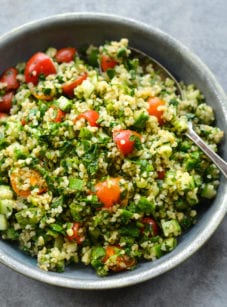
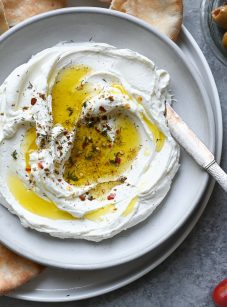
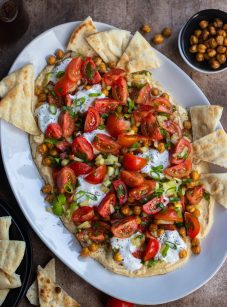
My first attempt at Hummus and it was great. So much better than store bought. And my husband actually ate it. A plus for me!
I made it and it was great. Sometimes I add some sun dried tomatoes, also yummy!
This is delicious, light, full of flavor and looked great which is not easy with hummus. Everyone loved it, I served with the pita you recommended for whipped feta, another delicious appetizer. Every time I have company, I try another recipe…..that’s how perfect your recipes are….thanks!! I also made sweet and sour shrimp and broccoli…..also great! Oh, yeah…..hoisin ribs and Thai slaw…..very busy and successful cooking weekend! You are the best!!!
💗
Awesome recipe. Highly recommend it.
Hi Jenn
Yum! The very best hummus. How long will this keep in the fridge? I am the only one eating it and it makes a lot. I see that the recipe says can be made two days in advance before serving. So, does that mean it has a three day life? Just want to know before I try cutting the next batch in half.
This hummus is the best I have ever had, better than shop brought and easy to make!
I would give you A THOUSAND stars in reviews.
My partner (Japanese) isn’t into any kind of spread (eggplant, pate, etc.) but oh boy how much he could eat of this hummus! :))
He was very skeptical when I served it with veggies and toast for breakfast but in the end he was like “you must enter this in your regular menu” :)))
I love it too and will surely make it again!
Thank you for all your work and efforts to provide us with easy to follow delicious recipes!
Hi Jenn! This review (or actually these words of gratitude) is long overdue! I’ve been a follower of yours for a pretty long time and right from the beginning, realized that you are an amazing cook (chef)! Absolutely every recipe that I have made of yours has been stupendous! Recently I’ve been on a hummus kick, seeking out my favorite recipe and then, there it was! The easiest, MOST wonderful hummus ever!!! (And, I think I’m a pretty good cook!). So.. thank you forever and ever!!!😘
You are so welcome, Sharon!! xoxo
Another successful recipe from Once Upon a Chef! I added a bit more garlic and it really amped up the flavor. This will be another go-to recipe in our house.
Hi Jenn, I live in Asia. So Tahini may not be available. Could I just toast the said amount of sesame seeds and grind them to a paste (instead of buying Tahini)? I do that for Japanese Sesame Dressing. Thanks.
Hi, I think you’ll need to add oil to the sesame seeds to make tahini paste. Here’s a recipe (keep in mind that I’ve never made this recipe but it seems pretty straightforward and gets good ratings). Hope that helps!